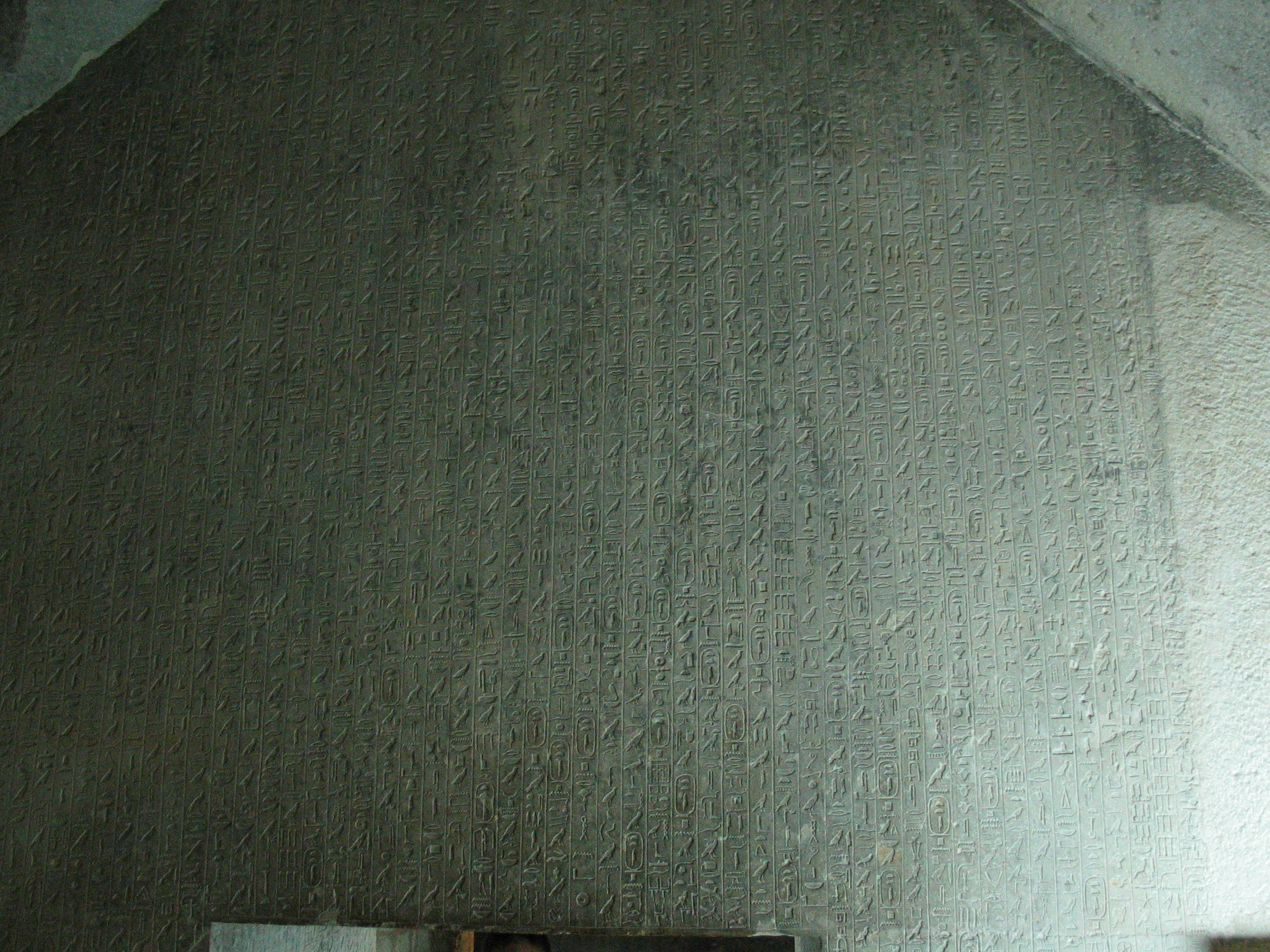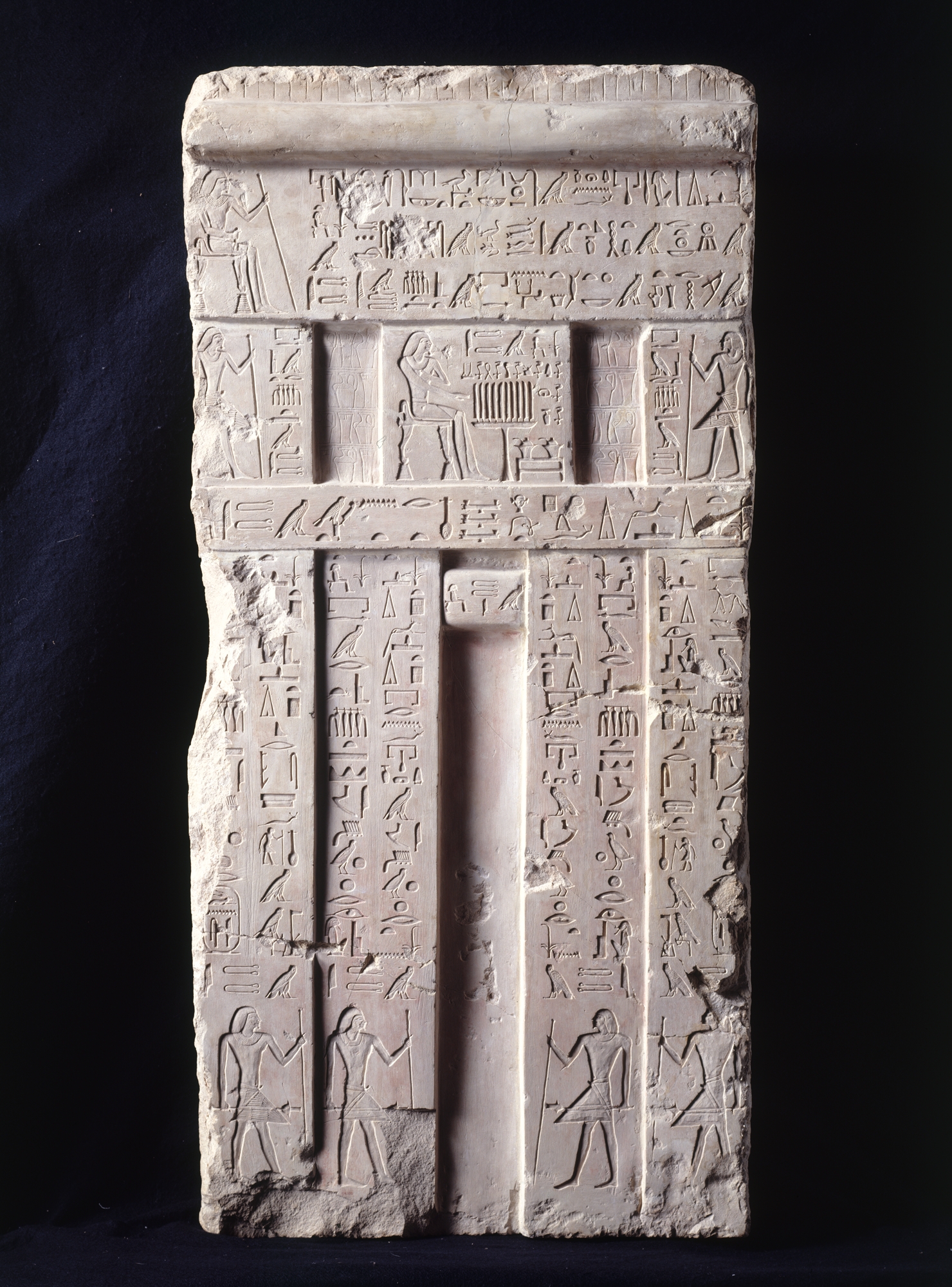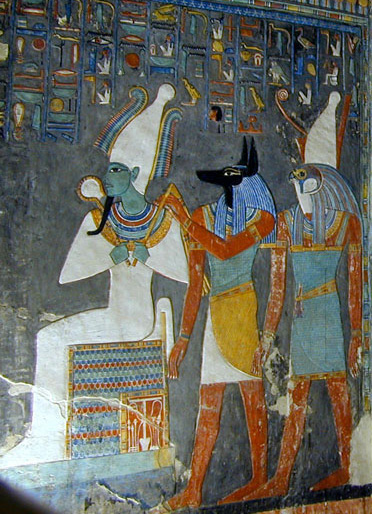|
Shesmetet
Shesmetet ''(šsm.t.t)'' is an ancient Egyptian goddess. She was mentioned in the Pyramid Texts''Pyramid Texts'' 262, 2206 and was usually referred to as the deceased's mother. She was depicted as a lion or a woman with a lion's head, and thus was sometimes considered a form of Sekhmet or Bastet, but one of her epithets – "Lady of Punt" – differentiates her from them and may refer to a possible African origin. Her name comes from ''shesmet,'' a sash decorated with beads, which appears on the depictions of Old Kingdom rulers and the god Sopdu Sopdu (also rendered Septu or Sopedu) was a god of the sky and of eastern border regions in the religion of Ancient Egypt.Wilkinson, Richard H. (2003). ''The Complete Gods and Goddesses of Ancient Egypt''. Thames & Hudson. p. 211 He was Khensit .... References Egyptian goddesses Lion goddesses {{Egyptian-myth-stub ... [...More Info...] [...Related Items...] OR: [Wikipedia] [Google] [Baidu] |
Ancient Egypt
Ancient Egypt () was a cradle of civilization concentrated along the lower reaches of the Nile River in Northeast Africa. It emerged from prehistoric Egypt around 3150BC (according to conventional Egyptian chronology), when Upper and Lower Egypt were amalgamated by Menes, who is believed by the majority of List of Egyptologists, Egyptologists to have been the same person as Narmer. The history of ancient Egypt unfolded as a series of stable kingdoms interspersed by the "Periodization of ancient Egypt, Intermediate Periods" of relative instability. These stable kingdoms existed in one of three periods: the Old Kingdom of Egypt, Old Kingdom of the Early Bronze Age; the Middle Kingdom of Egypt, Middle Kingdom of the Middle Bronze Age; or the New Kingdom of Egypt, New Kingdom of the Late Bronze Age. The pinnacle of ancient Egyptian power was achieved during the New Kingdom, which extended its rule to much of Nubia and a considerable portion of the Levant. After this period, Egypt ... [...More Info...] [...Related Items...] OR: [Wikipedia] [Google] [Baidu] |
Pyramid Texts
The Pyramid Texts are the oldest ancient Egyptian funerary texts, dating to the late Old Kingdom. They are the earliest known corpus of ancient Egyptian religious texts. Written in Old Egyptian, the pyramid texts were carved onto the subterranean walls and sarcophagi of pyramids at Saqqara from the end of the Fifth Dynasty, and throughout the Sixth Dynasty of the Old Kingdom, and into the Eighth Dynasty of the First Intermediate Period. The oldest of the texts have been dated to –2300 BCE. Unlike the later Coffin Texts and '' Book of the Dead'', the Pyramid Texts were reserved only for the pharaoh and were not illustrated. The use and occurrence of Pyramid Texts changed between the Old, Middle, and New Kingdoms of Ancient Egypt. During the Old Kingdom (2686 BCE – 2181 BCE), Pyramid Texts could be found in the pyramids of kings as well as three queens, named Wedjebten, Neith, and Iput. During the Middle Kingdom (2055 BCE – 1650 BCE), Pyramid Texts were not writte ... [...More Info...] [...Related Items...] OR: [Wikipedia] [Google] [Baidu] |
Sekhmet
In Egyptian mythology, Sekhmet ( or Sachmis , from ; ) is a warrior goddess as well as goddess of medicine. Sekhmet is also a solar deity, sometimes given the epithet "the Eye of Ra, eye of Ra". She is often associated with the goddesses Hathor and Bastet. Roles Sekhmet is the daughter of the sun god, Ra, and is among the more important of the goddesses in the Egyptian Pantheon (religion) , Pantheon. Sekhmet acted as the vengeful manifestation of Ra's power, the Eye of Ra. Sekhmet is said to breathe fire, and the hot winds of the desert were likened to her breath. She is also believed to cause plagues (which were described as being her servants or messengers) although she is also called upon to ward off disease and heal the sick. In a myth about the end of Ra's rule on the earth, Ra sends the goddess Hathor, in the form of Sekhmet, to destroy mortals who conspired against him. In the myth, Sekhmet's bloodlust was not quenched at the end of battle, and this led to her going o ... [...More Info...] [...Related Items...] OR: [Wikipedia] [Google] [Baidu] |
Bastet
Bastet or Bast (), also known as Ubasti or Bubastis, is a goddess of ancient Egyptian religion, possibly of Nubian origin, worshipped as early as the Second Dynasty (2890 BC). In ancient Greek religion, she was known as Ailuros (). Bastet was worshipped in Bubastis in Lower Egypt, originally as a lioness goddess, a role shared by other deities such as Sekhmet. Eventually Bastet and Sekhmet were characterized as two aspects of the same goddess, with Sekhmet representing the powerful warrior and protector aspect, and Bastet, who increasingly was depicted as a cat, representing a gentler aspect.Serpell, "Domestication and History of the Cat", p. 184. Name Bastet, which is the form of the name that is most commonly adopted by Egyptologists today because of its use in later dynasties, is a modern convention offering one possible reconstruction. In early Egyptian hieroglyphs, her name appears to have been ''bꜣstt''. James Peter Allen vocalizes the original form of the name as '' ... [...More Info...] [...Related Items...] OR: [Wikipedia] [Google] [Baidu] |
Land Of Punt
The Land of Punt (Egyptian language, Egyptian: ''wikt:pwnt#Egyptian, pwnt''; alternate Egyptian language#Egyptological pronunciation, Egyptological readings ''Pwene''(''t'') ) was an ancient kingdom known from Ancient Egyptian trade records. It produced and exported gold, aromatic resins, Dalbergia melanoxylon, blackwood, ebony, ivory trade, ivory and wild animals.Shaw & Nicholson, p. 231. Recent evidence locates it in northwestern Eritrea. It is possible that it includes or corresponds to Opone, as later known by the Ancient Greece, ancient Greeks, while some Biblical criticism, biblical scholars have identified it with the biblical land of Phut, Put or Havilah. At times Punt is referred to as ''Ta netjer'' (''wikt:tꜣ-nṯr#Egyptian, tꜣ nṯr''), . The exact location of Punt is debated by historians. Various locations have been offered, southeast of Egypt, a coastal region south of it along the Red Sea, Gulf of Aden and the Indian Ocean, in present day north-east Sudan, E ... [...More Info...] [...Related Items...] OR: [Wikipedia] [Google] [Baidu] |
Sash
A sash is a large and usually colorful ribbon or band of material worn around the human body, either draping from one shoulder to the opposing hip and back up, or else encircling the waist. The sash around the waist may be worn in daily attire, but the sash from shoulder to hip is worn on ceremonial occasions only. Ceremonial sashes are also found in a V-shaped format, draping straight from both shoulders down, intersecting and forming an angle over the chest or abdomen. Military use Old Europe In the mid-and late-16th century waist and shoulder sashes came up as a mark of (high) military rank or to show personal affection to a political party or nation. During the Thirty Years' War the distinctive sash colour of the House of Habsburg was red while their French opponents wore white or blue sashes and the Swedish voted for blue sashes. Beginning from the end of the 17th century, commissioned officers in the British Army wore waist sashes of crimson silk. The original office ... [...More Info...] [...Related Items...] OR: [Wikipedia] [Google] [Baidu] |
Old Kingdom
In ancient Egyptian history, the Old Kingdom is the period spanning –2200 BC. It is also known as the "Age of the Pyramids" or the "Age of the Pyramid Builders", as it encompasses the reigns of the great pyramid-builders of the Fourth Dynasty, such as King Sneferu, under whom the art of pyramid-building was perfected, and the kings Khufu, Khafre and Menkaure, who commissioned the construction of the pyramids at Giza. Egypt attained its first sustained peak of civilization during the Old Kingdom, the first of three so-called "Kingdom" periods (followed by the Middle Kingdom and New Kingdom), which mark the high points of civilization in the lower Nile Valley. The concept of an "Old Kingdom" as one of three "golden ages" was coined in 1845 by the German Egyptologist Baron von Bunsen, and its definition evolved significantly throughout the 19th and the 20th centuries. Not only was the last king of the Early Dynastic Period related to the first two kings of the Old Ki ... [...More Info...] [...Related Items...] OR: [Wikipedia] [Google] [Baidu] |
Sopdu
Sopdu (also rendered Septu or Sopedu) was a god of the sky and of eastern border regions in the religion of Ancient Egypt.Wilkinson, Richard H. (2003). ''The Complete Gods and Goddesses of Ancient Egypt''. Thames & Hudson. p. 211 He was Khensit's husband. As a sky god, Sopdu was connected with the god Sah, the personification of the constellation Orion, and the goddess Sopdet, representing the star Sirius. According to the Pyramid Texts, Horus-Sopdu, a combination of Sopdu and the greater sky god Horus, is the offspring of Osiris-Sah and Isis-Sopdet. As a god of the east, Sopdu was said to protect Egyptian outposts along the frontiers and to help the pharaoh control those regions' foreign inhabitants. He was referred to as ''Lord of the East'', and had his greatest cult centre at the easternmost nome of Lower Egypt, which was named Per-Sopdu, meaning ''place of Sopdu''. He also had shrines at Egyptian settlements in the Sinai Peninsula, such as the turquoise mines at Serab ... [...More Info...] [...Related Items...] OR: [Wikipedia] [Google] [Baidu] |
Egyptian Goddesses
Ancient Egyptian deities are the God (male deity), gods and goddesses worshipped in ancient Egypt. The beliefs and rituals surrounding these gods formed the core of ancient Egyptian religion, which emerged sometime in prehistoric Egypt, prehistory. Deities represented natural phenomenon, natural forces and phenomena, and the Egyptians supported and appeased them through sacrifice, offerings and rituals so that these forces would continue to function according to ''maat'', or divine order. After the founding of the Egyptian state around 3100 BC, the authority to perform these tasks was controlled by the pharaoh, who claimed to be the gods' representative and managed the Egyptian temple, temples where the rituals were carried out. The gods' complex characteristics were expressed in Egyptian mythology, myths and in intricate relationships between deities: family ties, loose groups and hierarchies, and combinations of separate gods into one. Deities' diverse appearances in art ... [...More Info...] [...Related Items...] OR: [Wikipedia] [Google] [Baidu] |





